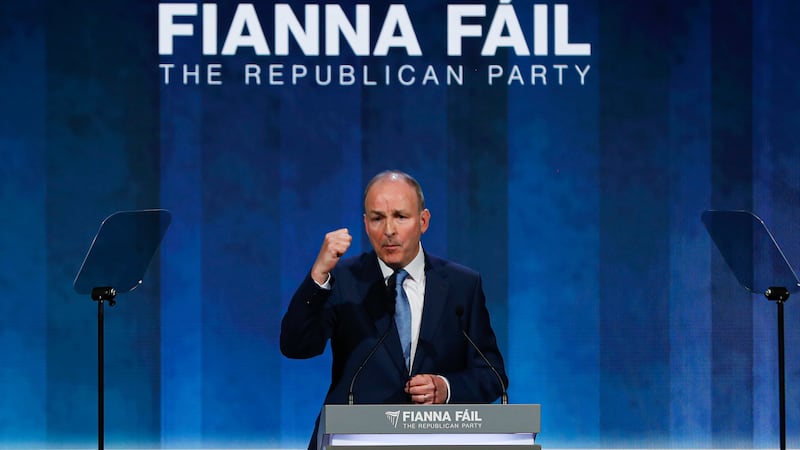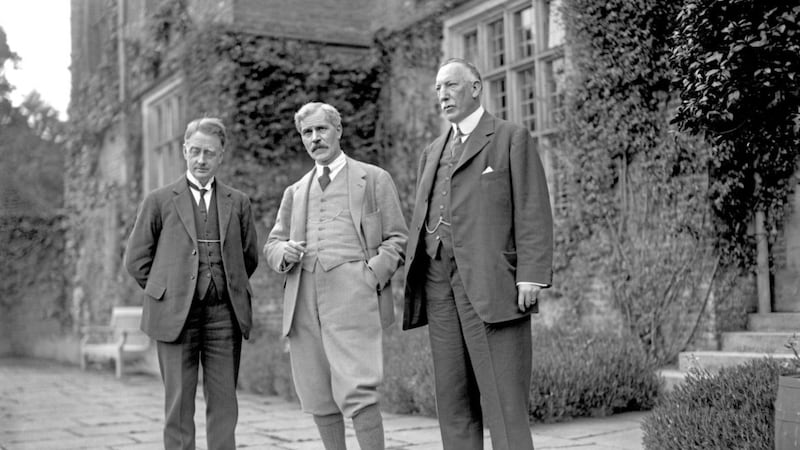ALL RIGHT, so the date at the top of the page may be February 24, 2021 but let’s fast-forward to 10 April 2028.
That will be the 30th anniversary of the Good Friday Agreement and on the day you just might be reading that the occasion is being marked by the formal exit of Northern Ireland from the United Kingdom and the establishment of an all-island independent state.
In my imaginary scenario, this would be taking place on foot of referendums in both parts of the island, with the south voting, say, 75 per cent in favour with 25 per cent against and 55 per cent in the north opting for unity, with 45 per cent against.
You might expect the majority in the south to be bigger but it is possible that a quarter of the electorate could vote No because of concerns about the cost and the possible imposition of extra taxes to pay for the new all-island entity.
Nationalists would obviously like to see a bigger majority on the northern side of the border but even ten per cent might not be realistic: indeed it would be quite an achievement. Mind you, the Good Friday pact itself was backed by 71 to 29 per cent in the north and 94 to six per cent in the south. A lot of work needs to be done because, in the words of Abraham Lincoln: “The most reliable way to predict the future is to create it.”
Whatever about the exact time-frame, not to mention the results, it does seem reasonable to forecast that the question of Irish unity will be subject to referendums in both parts of the island in the not too distant future. That is, of course, assuming that the current difficulties over the Brexit-inspired Northern Ireland Protocol don’t sink the Good Friday Agreement in the relatively near future, as former unionist leader David Trimble has warned.
Irish unity is of course the core element of Sinn Féin policy and there is a real possibility that they could be heading up a Dublin-based government in the next few years. Meanwhile, polling evidence at time of writing suggests that SF could end up as the biggest party when the next election to the Stormont Assembly is held, on or before May 5, 2022.
A parallel development which is adding to the momentum for a border poll on this island is the fact that the movement for Scottish independence is going from strength to strength. Elections to the parliament in Scotland are scheduled to take place in 10 weeks’ time on May 6 and the Scottish National Party, headed by First Minister Nicola Sturgeon, plans to hold a second referendum if there is a pro-independence majority at the Holyrood parliament. Boris Johnson has repeatedly expressed opposition to a second referendum and a spokeswoman for the UK government said the issue had been decisively settled in 2014. Permission to hold the last referendum was granted by the UK government under Section 30 of the Scotland Act 1998 but any attempt to refuse permission this time would be “vigorously opposed” by the SNP.
Seven years ago Scotland voted by 55 to 45 per cent to remain in the UK. It is believed a lot of people voted against independence because they wanted to remain in the European Union. Two years later, however, when the UK as a whole voted to leave the EU by 52 to 48 per cent, the result in Scotland was 62 to 38 per cent for staying. Brexit seems to have changed the mood on the constitutional issue because, in 21 public opinion polls conducted since last June on whether Scotland should be an independent country, the Yes side have been ahead by margins ranging from one to 14 per cent.
The biggest threat to the movement for Scottish independence could be a rift in the nationalist camp. Former friends and allies Nicola Sturgeon and Alex Salmond, her predecessor as first minister, are involved in a complicated dispute which has nothing to do with independence but could damage that cause which both of them have done so much to advance.
One cannot help thinking of our own Brendan Behan’s famous comment on Irish republicanism: “The first item on the agenda is the split.”
Email: Ddebre1@aol.com; Twitter: @DdeBreadun








